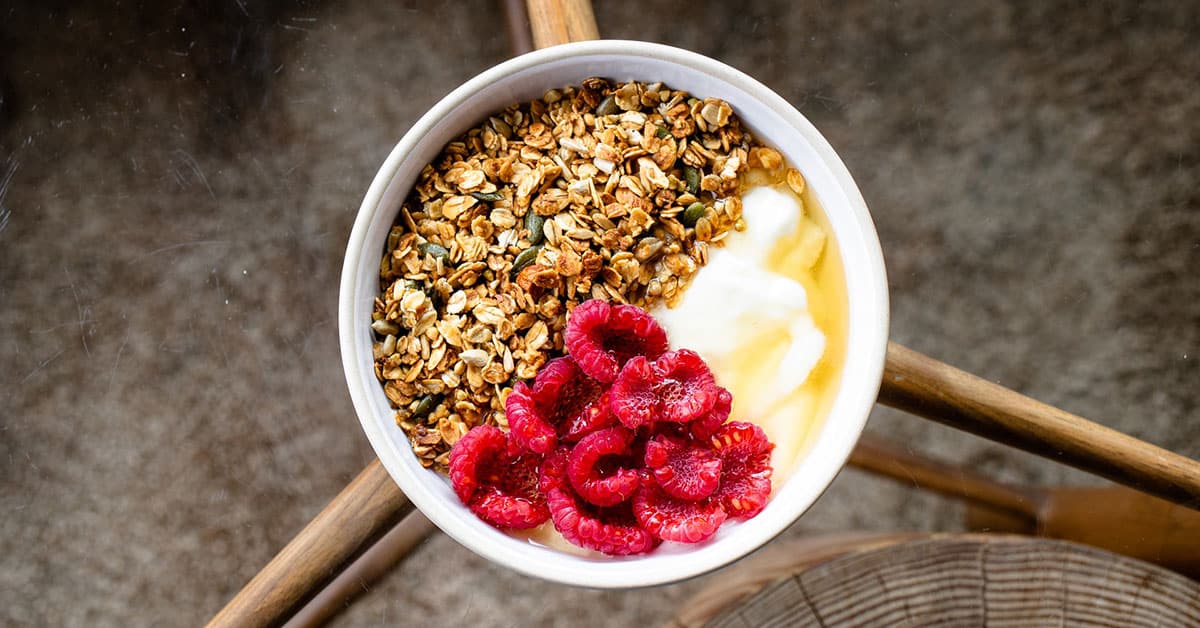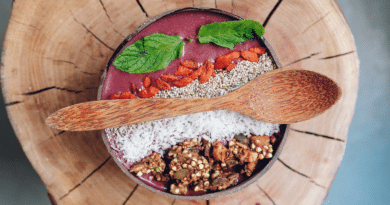How to Avoid and Cure Vitamin D Deficiency
Vitamin D deficiency can be dangerous, so watch out for the signs described in this article and make sure that you maintain healthy levels in your body.
Vitamin D is in all of the following healthy foods, so ensure you eat a mix of them in order to maintain good levels and optimise your fitness. Sunlight is also an essential element to enable the human body to create vitamin D. These are the most important factors when it comes to maintaining healthy vit D levels.
Vitamin D deficiency is a global health problem. “With all the medical advances of the century, vitamin D deficiency is still epidemic. Over a billion people worldwide are vitamin D deficient or insufficient.”
WHAT ROLE DOES VITAMIN D PLAY IN THE HUMAN BODY?
Vit D helps regulate the amount of calcium and phosphate in the human body. These nutrients are needed to keep bones, teeth and muscles healthy.
A vitamin D deficiency can lead to weaker bones and even deformities such as rickets in children, and bone pain caused by a condition called osteomalacia in adults. Vit D can also help prevent osteoporosis, which is another condition that will cause bones to deteriorate. It regulates the functions of over 200 genes and is essential for growth and development.
In addition, the vitamin may affect the immune system and could help to manage autoimmune conditions such as RA, Type 1 diabetes, and multiple sclerosis (MS).
Symptoms of vitamin D deficiency vary from person to person. Typical symptoms include:
- fatigue
- joint pain
- muscle pain and weakness
- bone pain
- respiratory issues
- neurological concerns including numbness
- low mood, specifically seasonal affective disorder (SAD)
FOODS THAT CONTAIN VITAMIN D
The following foods all contain vit D in varying amounts, and are healthy additions to any nutrition plan.
FISH
Oily fish such as salmon, tuna and trout, as well as oils from fish, have some of the highest quantities of vitamin D found in food sources.

These may include:
- Cod liver oil: This contains 450 international units (IU) per teaspoon, which is 75 percent of a person’s recommended daily allowance (RDA).
- Herring: This contains 306 IU per fillet, dry-cooked, which is 51 percent of a person’s RDA.
- Swordfish: This contains 706 IU per piece, dry-cooked, which is 117 percent of a person’s RDA.
MUSHROOMS
If you are vegetarian or vegan, mushrooms can be a great option. Some types of mushroom contain high amounts of vitamin D.
These include:
- Raw maitake mushrooms: These contain 562 IU per 50 grams (g), which is 94 percent of a person’s RDA.
- Dried shiitake mushrooms: These contain 77 IU per 50 g, which is 12 percent of a person’s RDA.
Mushrooms with exposure to ultraviolet (UV) light can also contain large amounts of vitamin D. These may include:
- UV-exposed raw Portobello mushrooms: These contain 568 IU per 50 g, which is 95 percent of a person’s RDA.
- UV-exposed raw white mushrooms: These contain 523 IU per 50 g, which is 87 percent of a person’s RDA.
FORTIFIED FOODS
Manufacturers add vitamin D to many commercially available foods. These foods as described as being fortified with vitamin D, or other nutrients.
Common foods with extra vitamin D and other nutrients include:
- cow’s milk
- orange juice
- various breakfast cereals
Vitamin D is also added to all infant formula milk, as well as some breakfast cereals, fat spreads and non-dairy milk alternatives.
The amounts added to these products can vary and may only be added in small amounts. Manufacturers must add vitamin D to infant formula milk by law.
EGG YOLKS

Egg yolks are be high in vitamin D. For example, a dish of scrambled eggs using two large hen eggs contains 88 IU, which is 15 percent of a person’s RDA.
TABLE
Use the following information to make sure you are getting enough vit D in your diet.
| Food | Standard Portion Size | Calories in Standard Portiona | Vitamin D in Standard Portion (μg)a,b | Calories per 100 gramsa |
|---|---|---|---|---|
| Salmon, sockeye, canned | 3 ounces | 142 | 17.9 | 167 |
| Trout, rainbow, farmed, cooked | 3 ounces | 143 | 16.2 | 168 |
| Salmon, chinook, smoked | 3 ounces | 99 | 14.5 | 117 |
| Swordfish, cooked | 3 ounces | 146 | 14.1 | 172 |
| Sturgeon, mixed species, smoked | 3 ounces | 147 | 13.7 | 173 |
| Salmon, pink, canned | 3 ounces | 117 | 12.3 | 138 |
| Fish oil, cod liver | 1 tsp | 41 | 11.3 | 902 |
| Cisco, smoked | 3 ounces | 150 | 11.3 | 177 |
| Salmon, sockeye, cooked | 3 ounces | 144 | 11.1 | 169 |
| Salmon, pink, cooked | 3 ounces | 130 | 11.1 | 153 |
| Sturgeon, mixed species, cooked | 3 ounces | 115 | 11.0 | 135 |
| Whitefish, mixed species, smoked | 3 ounces | 92 | 10.9 | 108 |
| Mackerel, Pacific and jack, cooked | 3 ounces | 171 | 9.7 | 201 |
| Salmon, coho, wild, cooked | 3 ounces | 118 | 9.6 | 139 |
| Mushrooms, portabella, Exposed to Ultraviolet Light, grilled | ½ cup | 18 | 7.9 | 29 |
| Tuna, light, canned in oil, drained | 3 ounces | 168 | 5.7 | 198 |
| Halibut, Atlantic and Pacific, cooked | 3 ounces | 94 | 4.9 | 111 |
| Herring, Atlantic, cooked | 3 ounces | 173 | 4.6 | 203 |
| Sardine, canned in oil, drained | 3 ounces | 177 | 4.1 | 208 |
| Rockfish, Pacific, mixed species, cooked | 3 ounces | 93 | 3.9 | 109 |
| Whole milkc | 1 cup | 149 | 3.2 | 61 |
| Whole chocolate milkc | 1 cup | 208 | 3.2 | 83 |
| Tilapia, cooked | 3 ounces | 109 | 3.1 | 128 |
| Flatfish (flounder and sole), cooked | 3 ounces | 73 | 3.0 | 86 |
| Reduced fat chocolate milk (2%)c | 1 cup | 190 | 3.0 | 76 |
| Yogurt (various types and flavors)c | 8 ounces | 98-254 | 2.0-3.0 | 43-112 |
| Milk (non-fat, 1% and 2%)c | 1 cup | 83-122 | 2.9 | 34-50 |
| Soymilkc | 1 cup | 109 | 2.9 | 45 |
| Low-fat chocolate milk (1%)c | 1 cup | 178 | 2.8 | 71 |
| Fortified ready-to-eat cereals (various)c | ⅓-1¼ cup | 74-247 | 0.2-2.5 | 248-443 |
| Orange juice, fortifiedc | 1 cup | 117 | 2.5 | 47 |
| Almond milk (all flavors)c | 1 cup | 91-120 | 2.4 | 38-50 |
| Rice drinkc | 1 cup | 113 | 2.4 | 47 |
| Pork, cooked (various cuts) | 3 ounces | 122-390 | 0.2-2.2 | 143-459 |
| Mushrooms, morel, raw | ½ cup | 10 | 1.7 | 31 |
| Margarine (various)c | 1 Tbsp | 75-100 | 1.5 | 533-717 |
| Mushrooms, Chanterelle, raw | ½ cup | 10 | 1.4 | 38 |
| Egg, hard-boiled | 1 large | 78 | 1.1 | 155 |
GETTING VITAMIN D FROM SUNLIGHT
The body creates vitamin D from direct sunlight on the skin when outdoors.
However, in countries that experience darker months in the winter, especially Scandinavian countries, it may be impossible to get enough sunlight in order to create enough Vitamin D naturally.
HOW LONG SHOULD WE SPEND IN THE SUN?
The following advice is from the British NHS.
“Most people can make enough vit D from being out in the sun daily for short periods with their forearms, hands or lower legs uncovered and without sunscreen from late March or early April to the end of September, especially from 11am to 3pm.
It’s not known exactly how much time is needed in the sun to make enough vit D to meet the body’s requirements. This is because there are a number of factors that can affect how vit D is made, such as your skin colour or how much skin you have exposed.

But you should be careful not to burn in the sun, so take care to cover up or protect your skin with sunscreen before your skin starts to turn red or burn.
People with dark skin, such as those of African, African-Caribbean or south Asian origin, will need to spend longer in the sun to produce the same amount of vit D as someone with lighter skin.
How long it takes for your skin to go red or burn varies from person to person. Cancer Research UK has tips to help you protect your skin in the sun.
Your body can’t make vit D if you’re sitting indoors by a sunny window because ultraviolet B (UVB) rays (the ones your body needs to make vit D) can’t get through the glass.”
COUNTRIES WITH LESS SUNLIGHT
Equatorial countries naturally have more consistent, year-round sunshine in comparison to those in more northern or southern locations such as Scandinavia, Iceland, Canada and Scotland. As vit D symptoms may manifest themselves in various ways, or can often be confused with other ailments, it is always a good idea to get your levels checked.
Approximately ten per cent of the Danish population have extremely low levels of vit D, with levels so severe that they risk developing weak bones.
For this reason, the Nordic nutrition recommendations have been changed, now advising that people get 10 µg of vit D a day, instead of the previous 7.5 µg.

One of Denmark’s leading scientists in the field of vit D research is associate professor Lars Rejnmark from Aarhus University’s Department of Clinical Medicine.
He is not surprised by the new study’s conclusions and applauds the fact that vit D recommendations have now been updated.
“It’s indeed sensible to increase the recommended dose as vitamin D deficiency is common in Denmark, especially during the winter months,” says Rejnmark.
“Vitamin D is a hot topic at the moment,” says Professor Inge Tetens from the National Food Institute at Denmark’s Technical University (DTU), who sits in the working group under the Nordic Council of Ministers that is responsible for updating the Nordic nutrition recommendations.
“The review of the latest studies shows that people in Scandinavia need to get more vit D from their diet than recommended by the previous working group,” says Tetens.
The literary review that lead to this conclusion was assessed by nutrition researchers from Finland, Norway, and Iceland. It consists of a systematic review of 1,706 studies published between 2000 and 2010 on the correlation between vit D, status, and health effects.
The review concludes that “10 µg of vit D per day is necessary if promotional health effects are to be achieved for people resident in the Nordic Region, where the sun does not shine for much of the year”.
CAN YOU HAVE TOO MUCH VITAMIN D?
If you choose to take vitamin D supplements, 10μg a day will be enough for most people.
People who take supplements are advised not to take more than 100μg of vit D a day, as it could be harmful (100 micrograms is equal to 0.1 milligrams).
This applies to adults, including pregnant and breastfeeding women and the elderly, and children aged 11 to 17.
Children aged 1 to 10 shouldn’t have more than 50μg a day. Babies under 12 months shouldn’t have more than 25μg a day.
Some people have medical conditions that mean they may not be able to take as much vit D safely.
If in doubt, you should talk to your doctor. If your doctor has recommended you take a different amount of vit D, you should follow their advice.
The amount of vit D contained in supplements is sometimes expressed in international units (IU), where 40 IU is equal to 1 microgram (1µg) of vit D.
There’s no risk of your body making too much vit D from sun exposure, but always remember to cover up or protect your skin before the time it takes you to start turning red or burn.
HOW TO TEST FOR VITAMIN D DEFICIENCY
A vitamin D deficiency can affect both physical and mental health, but many people have low levels of vitamin D without realizing.
The most accurate way to measure how much vit D is in your body is the 25-hydroxy vitamin D blood test. A level of 20 nanograms/milliliter to 50 ng/mL is considered adequate for healthy people. A level less than 12 ng/mL indicates vitamin D deficiency.
With over a billion people worldwide who are vit D deficient, and many serious consequences that result from that state, make sure that you are spending enough time outside and getting appropriate levels of vit D in the foods that you choose to eat.
Want to improve your health further? Try these high protein vegetarian foods or vegan soup recipes.





Comments are closed.